EAT and SEO has been a very popular topic for a long time. Thus bringing you an article on EAT and SEO. It can help to increase your website’s authority.
What is EAT?
EAT stands for Expertise, Authoritativeness, and Trustworthiness. These matrices are used by Google for checking the content quality and trustworthiness of any website, article, post, products or services.
The term was coined by Google on August 1, 2019, when it brought major changes to its Broad Core Algorithm. EAT are three major pillars for the quality rating of a website.
EAT originated from the Medic Update that rolled out in August 2018. The update was for the core algorithm of Google and affected medical and health websites majorly.
In the article, I will be discussing some points on the following topics:
- What are Google’s quality raters’ guidelines?
- Brief of Medic Update and YMYL
- How does Google measure EAT?
- Ways to improve your EAT
Starting with the article let’s understand the wave that led to the storm of EAT, the medic update and YMYL.
Medic Update and YMYL, the origin
Medic update as mentioned earlier rolled out in August 2018, showed its impact on loads of medical and health-based sites. Therefore, Barry Schwartz, a popular Search Engine Marketing journalist called it “The Medic Update”.
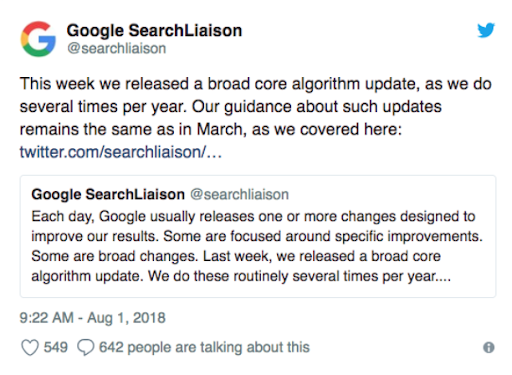
To say that, it only messed up health and medical sites is wrong. The update stung all the sites that fell under the category Your Money Your Life (YMYL).
Yes, Your Money Your Life, no don’t get surprised by the name, the name was made up by Google and it’s not even a pop song.
YMYL refers to a group of sites that convey information based on topics such as happiness, finance, health, and so on.
Contents like these require writers that have great expertise on the topic, as they might have a direct impact on the life of the reader. Here, the main objective of Google is to serve its users with not only quality content but content that is free from uneducated opinions and advice or potentially fraudulent links.
Google wants to make sure that the YMYL content being portrayed to the users has a high level of Expertise, Authoritativeness, and Trustworthiness (EAT).
Yes, now we are getting there and are able to connect the chains. But let’s get back to the medic update.
The medic update was a great setback for site owners especially having content based on health or medical topics. Experts explained it as an update for Google’s broad core algorithm but the exact definition for the update was still not clear.
Thus, leaving the SEO experts with an unsatisfied explanation. The only data that came up was that which niches were affected majorly, provided by Search Engine Round Table.
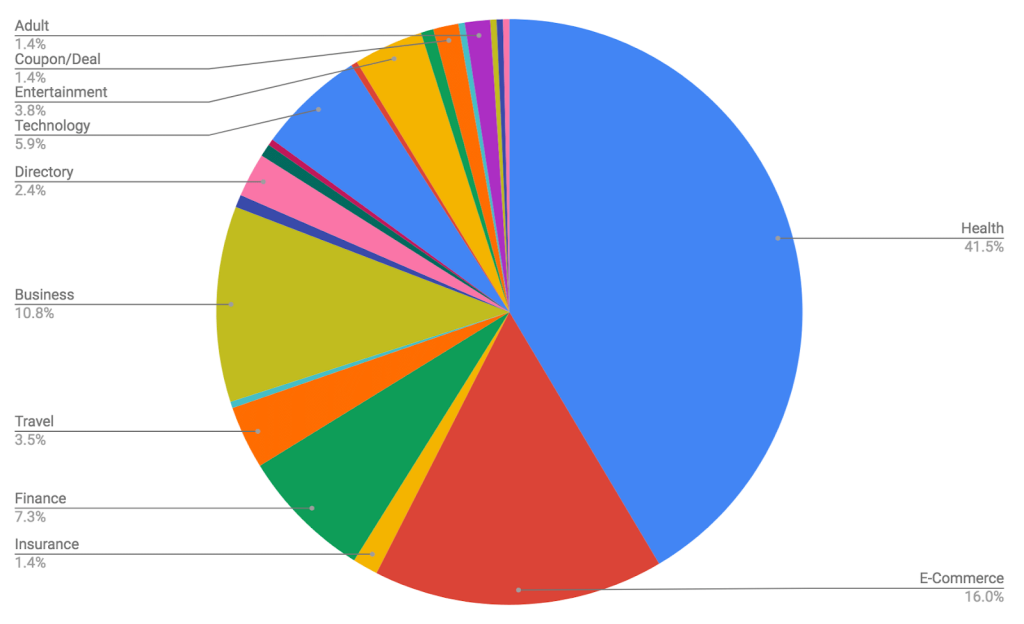
While Google stood firm with the policy of creating great content to make it rank on the SERPs.
Search Quality Evaluator Guidelines
Search Quality Evaluator Guideline is an important piece of the document by Google that can give you an idea of what is considered as a high or low-quality website. In this section, I’ll be briefing you about the guideline for quality raters.
The document covers two major areas as guidelines for quality raters:
- Page Quality
- Needs Met
Page Quality (PQ)
Page Quality is a set of tasks for that are completely based on the quality raters’ exploration of page.
To be a successful page quality rater one needs to be keen on the following points:
- The rater’s experience as an ordinary user.
- In-depth knowledge of Search Evaluator Guidelines
Web pages are created for fulfilling a purpose which could be:
- Share information on a topic
- Share an individual’s personal or social information
- Entertainment
- Sell products or services
- To share any form of media (images, videos, etc.)
Thus the goal of PQ is to see how well a page achieves its purpose. This means the quality rater now had to observe how well a page achieves its purpose and is successful in sharing information to its target audience.
Types of page |
Goal or Purpose |
| News Website | Share information about important or recent events. |
| Shopping page | Share information (price, quantity, etc.) about various products. |
| Video Tutorial Page | Share tutorials to the audience on a particular topic. |
Pages that fail to achieve the purpose of its creation or if the raters cannot judge the motive of creation are considered as low-quality pages.
Needs Met (NM)
Need Met or NM, for short, is another parameter for the quality evaluators to judge the value of a web page for mobile users.
As the guidelines state:
Needs Met rating tasks ask you to focus on mobile user needs and think about how helpful and satisfying the result is for mobile users.
Based on the page the Needs Met Level is decided by the following scale:

Here is a description of the various levels of the NM scale to make it even more clear:
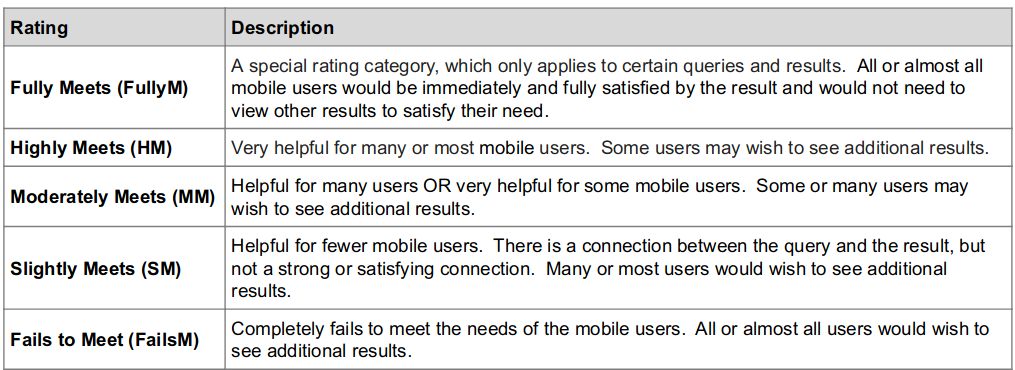
Now that we have briefly understood Google’s Quality Evaluator Guidelines, let’s move with our EAT and SEO.
EAT and SEO, The Beginning
The update rolled out to update Search Evaluator Raters’ Guidelines for its EAT policies. So the raters will now have to evaluate both website content and author.
Now we have two forms of EAT:
- Website Content EAT
- Website Content Creator’s EAT
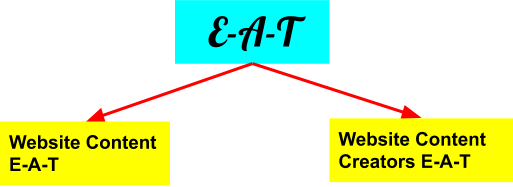
Based on this Google has its list of high or low-quality pages.
According to Google, a High-Quality page is one that has a goal behind its creation and should be fulfilling that purpose very well.
Therefore a High-Quality page has the following characteristics:
- A high level of Expertise, Authoritativeness, and Trustworthiness (EAT).
- A satisfying amount of main content (MC) that should be descriptive and relatable to the title.
- Satisfying website information and/or information about who is responsible for the website. Example: A shopping should page with satisfying customer service information.
- Positive reputation for the Main Content and the author.
The Low-Quality pages are just opposite to the high-quality pages. Pages that do not meet their purpose creation are considered low-quality pages.
Pages with the following characteristics are considered as low-quality pages by Google:
- An inadequate level of Expertise, Authoritativeness, and Trustworthiness (EAT).
- The quality of the MC is low.
- Inadequate amount of MC on the page, unable to fulfill the purpose of the page.
- The title is exaggerating or shocking.
- The supplementary content (like ads., embed posts, media, etc.) distracts the user from the main content.
- An unsatisfying amount of information for the website and the creator of the main content reason.
- A mildly negative reputation for a website or creator of the MC, based on extensive reputation research.
Let’s have a look at a few examples from Google’s document on Quality Evaluator Guidelines:
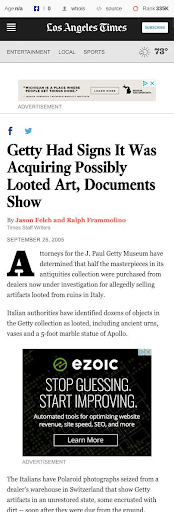
The above is an example of a newspaper site that falls under the YMYL category. The site depicts an award-winning article.
The PQ rating for the above example is given below.

The page has received the highest rating level on the NM scale because of:
- The high rating of the Author.
- A comprehensive amount of Main Content.
Let’s have a look at other examples that will tell us what pages fall under the low-quality page parameter.

Here is another example from the Search Quality Evaluator Guideline that is an article on nuclear power. The PQ rating of the page is more tilted towards the lower end of the scale due to the lack of EAT.
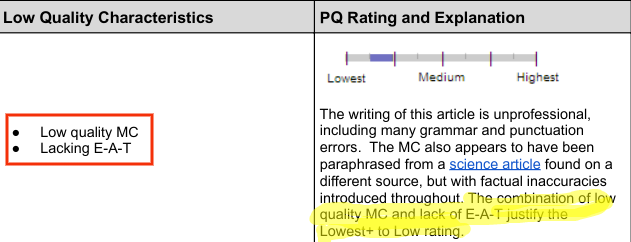
After having a look at both these examples we can conclude that along with the main content EAT it is also important that we pay attention to the content creator EAT., especially if you are the creator of a YMYL content.
Why Author EAT is important?
Now, the question arises why author EAT is important. The simple answer is that Google wants to show its searchers articles written by people who have achieved expertise in that field. There are hundreds of writers in the market, but finding an affordable ghostwriting service that combines skill in writing with genuine expertise on the topic can be a challenging task.
We can make this more unambiguous with the help of an example:
Imagine you need an article on cancer. What would you prefer, an article whose author is a great SEO content writer or a person who is an experienced doctor?
Yes, now you are there and able to understand why Google has given importance to author EAT.
Google’s Algorithm for EAT
Many of us will be happy to know if someone on this planet can tell us what are those Google’s Algorithm for measuring EAT. As always the golden truth of algorithms is locked within the Fort Knox called Google.
Enough talking let’s get back to work. Even though I cannot give you a perfect idea but yeah as other’s I will provide my audience with some brief theoretical knowledge.
Have a look at the data from around the year 2017 when sites were hit prior to Medic Update:

The above graph shows the changes in the analytics report for the sudden rank changes. These were caused because of Google updated its Quality Rater Guidelines for EAT. Most of these sites had content by authors that were big shots in the field that they wrote on.
The situation even got worst when Medic Update rolled out in August 2018 for YMYL sites. Site owners of YMYL sites that lacked EAT got to see huge rank drops.
Getting back into history let’s refer some Tweets and posts that could help us trace the trails of EAT.
Just a few days before when Gary IIIyes posted a random tweet that mentioned Quality Evaluator Guidelines.
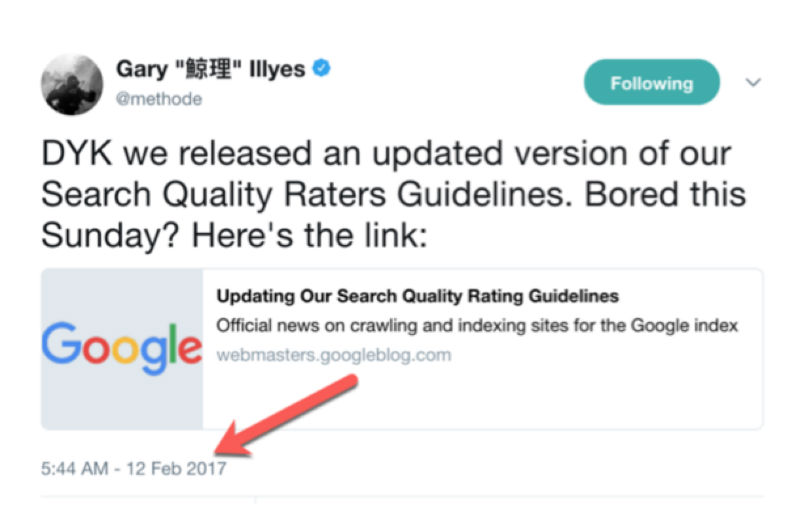
So yes we can say that even before the Medic Update the wind for the updation for the guidelines started to blow.
Until when Danny Sullivan spilled out a hint in his tweet that gave a suspicion of change in Search Evaluators’ Guidelines leading to a rank drop in YMYL site.

So now we know how important is for Google to have a good EAT? So you’ll be very happy and if I tell you how to improve your EAT score, but before that let’s discuss each and every letter of the abbreviation in detail.
E for Expertise
As per Cambridge dictionary an Expert is a person:
with a high level of knowledge or skill relating to a particular subject or activity.
Yes, this means for curating content on a specific topic you need to have an in-depth knowledge of the topic. But possessing knowledge is not enough for Google. For bringing floods of traffic on your site communicating the knowledge in a way that engages people is necessary.
It all starts with how you communicate your knowledge with the target audience. It can be easily achieved if you understand how a piece of information is going to be communicated.
Just ask yourself, “Who is my target audience?” This one simple question can help you lead your content curation in the proper direction that it needs to go, this differs a normal content from a content that shows a level of expertise.
A few tips that can help you create content that shows your Expertise can be as follows:
- Try to understand what people might be searching for. Take queries in the account that are the latest in the trends. By doing this one can stand firmly upon the users’ needs and expectations.
- Understand the searchers’ intent to make it vivid for you what they might be searching for?
A for Authority
Now that you have proved your expertise by creating expert content, its’ time to show your authority in your vertical.
Being an authority makes you or your brand synonymous with the topic you might be working upon. Here are some KPIs that are used (or might be used) by Google to measure authority:
- The number of links that are relevant to your topic and come from high authoritative sites.
- Widely shared content can be another approach that can also be considered. The only principle you need to follow is the genuine and consistent shares over social media channels.
- Try building your brand authority over relevant keywords, in a manner that they are searched with your brand name. Confused?? Check the below example:
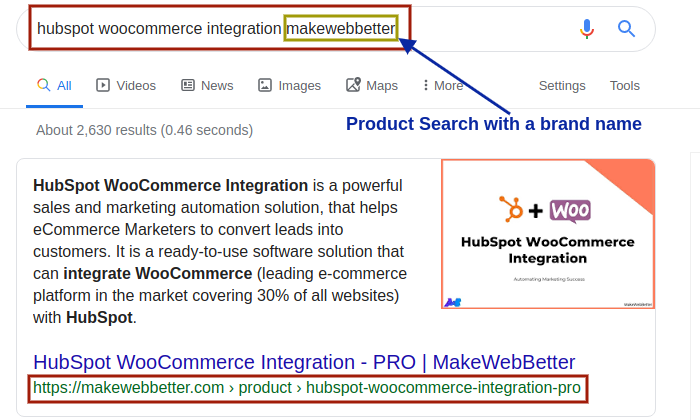
This appears to be easy actually it takes time to rank your brand on a certain keyword.
- Along with the aforementioned KPIs, there is a foolproof method of building authority but it will take some doing. That is having your Wikipedia page, which is actually really very difficult but is something worth striving for.
Some tools that can help you with the journey are:
T for Trustworthiness
Building Expertise and Authority is good but for creating a brand you need to build a feeling of trustworthiness among your audience.
As said by Bernard Kelvin Clive
When trust is broken, business is lost
Trustworthiness is the medium that makes your audience believe that the creator of the main content is a knowledgeable person (and will not do any harm). Especially eCommerce sites that ask for personal information such as credit card details, or any other personal information.
If I talk about YMYL sites it becomes even more important to build a feeling of trustworthiness in your audience so that they believe that the information that they are receiving is authentic.
The most important KPI that can make you a trustworthy site owner is positive user reviews. In its guidelines, Google has made it very clear that too many negative reviews are a sign of the low-quality site.
Listing on some of the popular mediums such as:
- Tripadvisor
- Trustpilot
- Google My Business
And so on, it can make your site look trustworthy in the eyes of your audience.
Bonus Tip
If your business is focussed in the US, Canada, or Mexico, encourage to acquit good reviews on Better Business Bureau. This is a go-to source as per Google’s Quality Raters’ Guidelines.
For promoting your trustworthiness try these steps:
- Associate your site with a correct physical location on Google My Business.
- Make a clear and easy to access page for Terms and Conditions about your business policies.
- A clear description of refund and exchange policies if you accept payments.
- Implement HTTPS for making your domain secure and make sure that the users’ data is not accessible to any notorious third-party entity.
- If your site only shares knowledge then showing an author bio can be a good idea. Make your author linked with relevant external links.
EAT, a ranking factor?
So, yeah after talking so much on EAT and SEO now is the time to answer the most awaited question, is EAT a ranking factor?
To make it more clear you need to understand that Google wants to give its information hunters something that is relevant but at the same time authentic. This alone justifies how important is to work upon your website’s EAT.
Feeding your body well is necessary for survival, in the same way, as a webmaster you need to make your site EAT well on the information. Feeding your site with correct information such as the author’s bio or making your page look authoritative can help Google see your page as a bundle of authentic information. Building trust is the necessity for converting your organization into a brand.




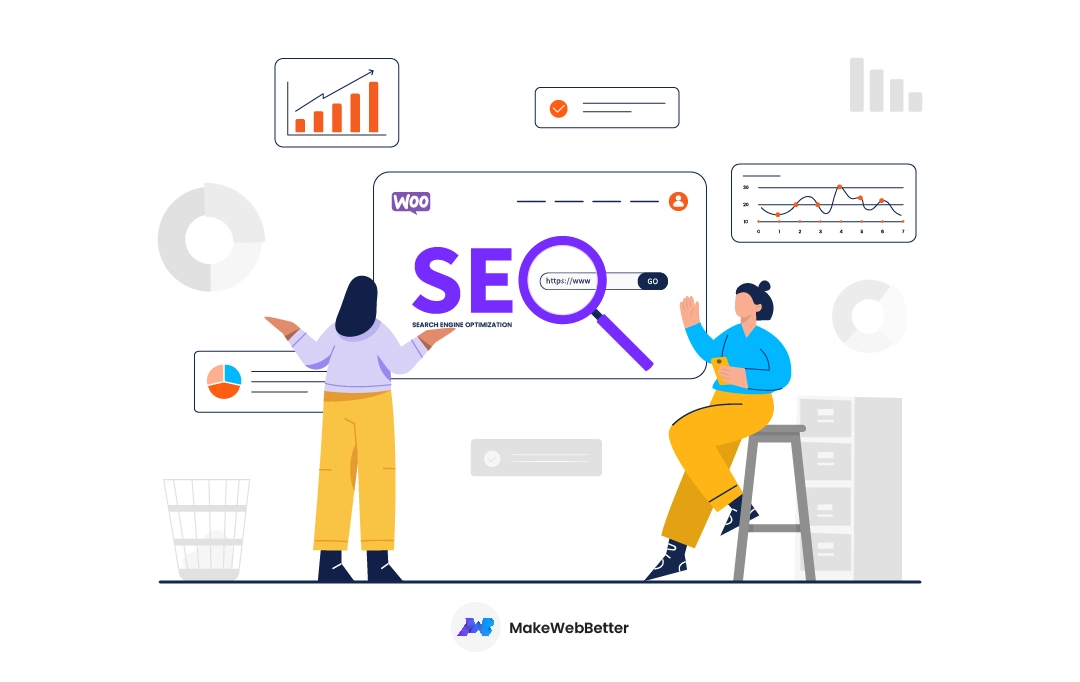




thank you for sharing this piece of information it was very helpful.
Thank You Sagheer for your acknowledgment.